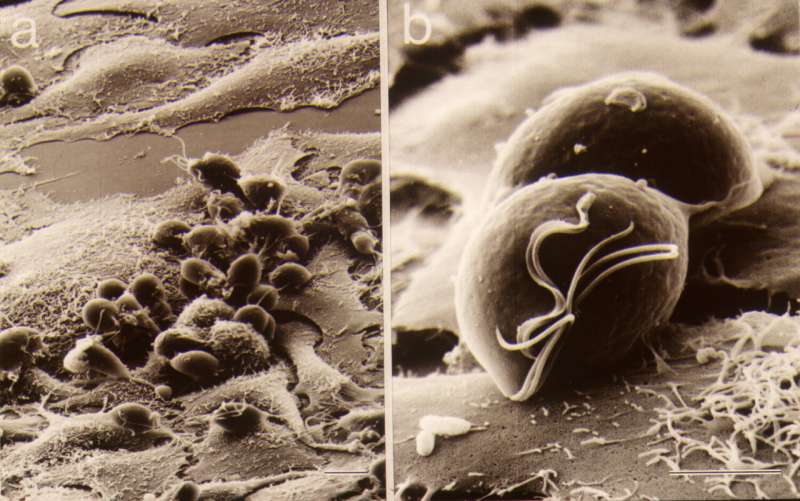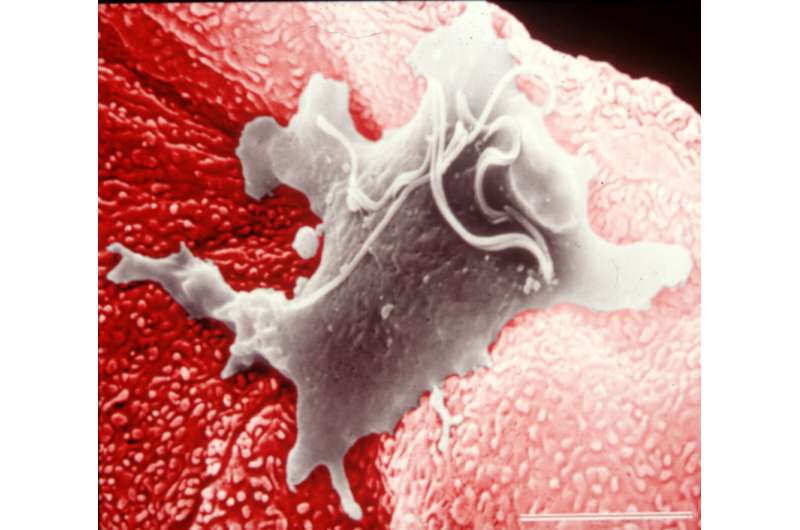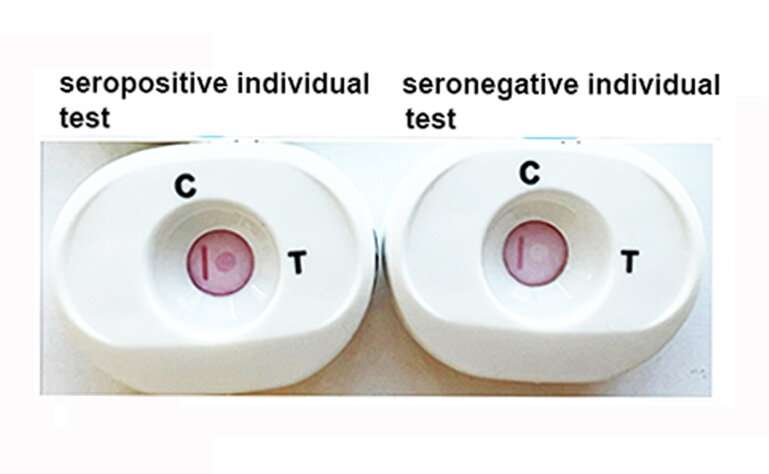This article has been reviewed according to Science X'seditorial processandpolicies.Editorshave highlighted the following attributes while ensuring the content's credibility:
fact-checked
trusted source
proofread
Finger-prick test developed for trichomoniasis

A quick, affordable diagnostic test developed by a Washington State University researcher may help curb one of the most prevalent but least discussed sexually transmitted infections.
More common than chlamydia or gonorrhea, Trichomonas vaginalis, also known as trich, causes no symptoms in about 70% of those infected. Even when asymptomatic, trich is linked to a host of bad health outcomes, including increased susceptibility to HIV,prostate cancerin men and infertility and pregnancy complications in women.
Trich is easily curable with a drug called metronidazole, if diagnosed, and WSU researcher John Alderete has been working for years to improve testing and make it more accessible. His latest development, detailed in thejournalPathogens, is a new finger-prick test that delivers results in five minutes and can be produced for under $20.
"We know a lot about the biology of this organism," said Alderete, the study lead author and professor in WSU's School of Molecular Biosciences. "There probably will never be a vaccine for trich simply because the organism is well equipped to evade our immune responses. But I'd argue we don't need a vaccine. We just need to diagnose people, and once diagnosed, they can be cured."

Currently trich is often only diagnosed when symptoms are present, which can include genital itchiness and a burning sensation during urination. The tests in use now are focused on diagnosing women and involve a vaginal swab. It takes time to get results, and the tests require trained personnel as well as specialized equipment. Other methods recently approved by the Food and Drug Administration also have similar limitations.
As detailed in this study, the new test requires only a drop of blood to detect an antibody specific to trich. Alderete previously identified this biomarker, an alpha-actinin protein unique to this organism namedACT::SOE3 in earlier research. Both men and women make the antibody when they are infected.
Alderete, working with co-author Hermes Chan from the company MedMira, used the diagnostic platform of the company for his finger-prick test to detect for antibody to the target protein. Similar to COVID-19 and pregnancy tests, the results are displayed in a window with a dot appearing if the antibody is present, indicating infection. It is a point-of-carediagnostic testmeaning positive results lead to immediate treatment and cure of a person. The test does not require specialized training and equipment to administer.
The goal was to meet World Health Organization "ASSURED" standards for disease detection, which stands for affordable, sensitive, specific, user-friendly, rapid and robust, equipment-free and deliverable to end users. Since trich is a world-wide problem with an estimated 156 million new cases each year, Alderete hopes the test can ultimately be used in manylow-resource countries, particularly in places like Africa where trich is suspected to be a contributing factor in the spread of HIV.

Thetestcan also have many benefits in the U.S. as well. Alderete estimated there are more than 9.2 million cases annually based on incidence rates and census data. . One study found that 50% ofpregnant womenhad persistent undiagnosed infections—a significant concern since trich is associated with pre-term membrane rupture,preterm birthand low infant birth weight.
The first step is to make more people aware of the problem, Alderete said.
"Trich is the most common STI you've probably never heard of," he said. "This STI may be the most neglected among the other curable STIs. We just have not done a good job in medicine to educate people. One of the major problems is that most people are asymptomatic. In other words, you may have it, but you don't know you have it until you have a really bad problem."
Patent protection on the new development is in process.
More information:John F. Alderete et al, Point-of-Care Diagnostic for Trichomonas vaginalis, the Most Prevalent, Non-Viral Sexually Transmitted Infection,Pathogens(2023).DOI: 10.3390/pathogens12010077

















